Noblemen, Bureaucrats or Strongmen?
by Dominic Goodall
Who were the "vassal kings" or "governors" in Cambodia's pre-Angkorian times?

Publication: Udaya, Journal of Khmer Studies no 14
Published: 2019
Author: Dominic Goodall
Pages: 63
Language : English
pdf 5.8 MB
A thorough study of some Sanskrit-Khmer epigraphs turns into a a fascinating insight of the social organization of pre-Angkorian societies, in this case the 7th century kingdom of Isanavarman I and II.
How were the “strongmen” of that time selected, appointed and kept in their position? Was the hereditary criterium as important as we tend to believe? When did the status of “pon” (man or woman of power) involve into a more “bureaucratic” definition, servant of a budding state, “governor”?
Tags: Sambor Prei Kuk, pre-Angkorean, Isanapura, epigraphs, society, hierarchy, 7th century, Sanskrit, Old Khmer, Chenla
About the Author

Dominic Goodall
Dominic Goodall is a Sanskritist (with a solid Greek and Latin linguistics background) and historian in religion. After completing his BA (Sanskrit with Pali, 1990) at Oxford University, he came to Hamburg for two years to learn medieval Tamil with Professor S.A. Srinivasan.
Back to Oxford under the guidance of Professor Alexis Sanderson, he produced a critical edition of the opening chapters of Bhaṭṭa Rāmakaṇṭha’s 10th-century commentary on the Kiraṇatantra (doctoral thesis in 1995, published in Pondicherry in 1998).
He became Head of the EFEO (Ecole Francaise d’Extreme-Orient) Pondicherry Center in 2002, where he remained until April 2011. A professor (directeur d’études) at the EFEO, he co-edited with Dr. Marion Rastelli the Viennese dictionary of tantric terminology, the Tāntrikābhidhānakośa, and a contributor to the Hamburg Encyclopaedia of Manuscript Cultures in Asia and Africa (EMCAA).
Among his publications are editions and translations of works of poetry in Sanskrit and of unpublished Śaiva scriptures and theological commentaries. Dominic Goodall is also participating in the editing of epigraphs, particularly Cambodian ones.

